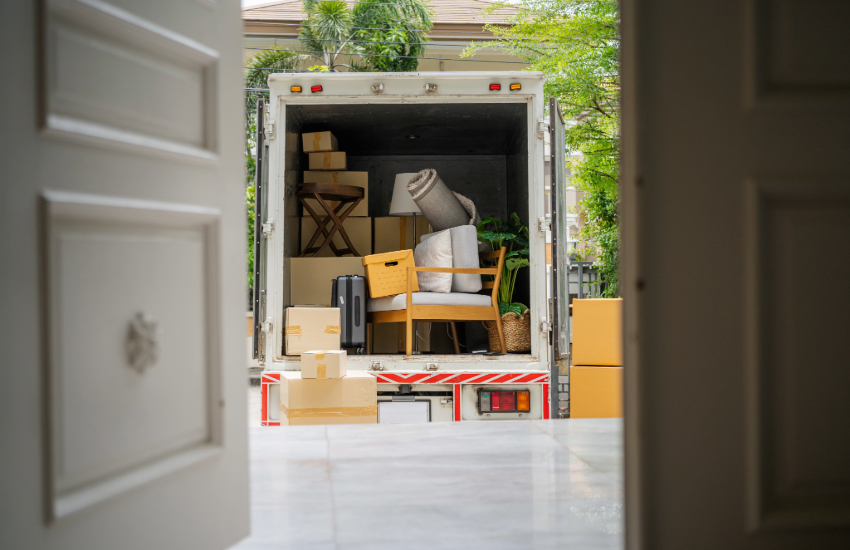
Moving to a new home is exciting, but packing up everything you own? That can feel overwhelming – fast. The good news is that knowing what to pack first when moving makes the entire process easier. By starting with non-essential items and working your way toward everyday essentials, you’ll stay organized, save time, and reduce stress when moving day arrives.
Whether you’re relocating across town or across the country, this guide breaks down exactly what to pack first, what to leave for last, and how to stay on top of the moving process.
Why Packing Order Matters
When people start packing, they often grab whatever’s closest – which can create chaos. You end up digging through boxes for things you still need or rushing to throw last-minute items together.
By following a clear packing order, you’ll:
- Avoid packing (and unpacking) stress.
- Prevent damage by packing fragile items carefully, not in a hurry.
- Keep everyday essentials accessible until the last day.
- Save time during unpacking because everything is grouped logically.
Think of it as working from the outside in – pack the items you rarely use first, then gradually move to the things you use daily.
What to Pack First When Moving
1. Off-Season Items
Start with the easiest category: things you won’t use before the move.
- Clothing: Pack up coats, sweaters, swimsuits, or sandals depending on the season.
- Sports gear: Surfboards, skis, camping gear – box up whatever doesn’t fit the current weather.
- Holiday décor: Decorations, wrapping supplies, and seasonal items can be packed months in advance.
These items are out of sight, out of mind, and won’t disrupt daily life.
2. Rarely Used Spaces
Next, move to rooms and areas that aren’t part of your daily routine:
- Attic, basement, or garage storage
- Guest bedrooms and bathrooms
- Closets with old keepsakes
Packing these areas first helps you make quick progress while reducing clutter you probably won’t notice missing.
3. Books, Décor, and Collectibles
Your home may feel a little bare without decorations, but these items are easy to live without for a few weeks.
- Wall art, picture frames, and mirrors
- Figurines, vases, or other fragile décor
- Books, magazines, and albums you won’t read or use before moving day
Tip: Use bubble wrap or packing paper for anything breakable, and label these boxes as “fragile.”
4. Extra Kitchen Supplies
Your kitchen is essential, but most people have far more dishes and gadgets than they need.
- Small appliances like waffle makers or mixers
- Serving platters, casserole dishes, and wine glasses
- Extra pots, pans, and utensils
Keep out just enough to cook simple meals (one pan, one pot, and basic silverware), then pack the rest.
5. Linens, Towels, and Bedding
If you have multiple sets of bedding and towels, you don’t need all of them at once.
- Pack extra sheets, blankets, and guest bedding.
- Box up spare bath towels and beach towels.
- Keep just one set per person available until the move.
This is also a good time to donate or recycle worn-out linens so you’re not hauling unnecessary items to your new home.
6. Clothing and Shoes You Don’t Need Immediately
After off-season clothes, trim down your wardrobe even further. Create a mini capsule wardrobe for the last few weeks before the move, just a few versatile outfits and shoes. Everything else can go into boxes.
Pro tip: Roll clothes instead of folding to save space and reduce wrinkles.
7. Non-Essential Electronics and Entertainment
You probably don’t need your entire entertainment system up until the last day. Start with:
- Gaming consoles and accessories
- Old laptops, tablets, or stereo equipment
- DVD collections or board games
Keep just your main TV or laptop accessible until moving day, then pack those up last.
What to Pack Last (Save for Moving Week)
Just as important as knowing what to pack first is knowing what to leave until the end. These are the things you’ll need right up to moving day:
- Everyday toiletries (toothbrush, shampoo, deodorant)
- A week’s worth of clothing and shoes
- Kitchen basics (coffee maker, a few dishes, silverware)
- Medications and important documents
- Pet supplies and children’s essentials
Pack these into a clearly labeled “Essentials Box” or suitcase that stays with you during the move. That way, you’ll have everything you need for your first night in your new home without digging through dozens of boxes.
Bonus Moving Tips for Stress-Free Packing
- Ship ahead: Send your non-essential items ahead with ShipGo, and meet your belongings at your new home.
- Declutter as you go: Donate, sell, or recycle items you no longer need. There’s no point in moving things you won’t use.
- Label everything clearly: Note both the contents and the destination room (e.g., “Kitchen – Small Appliances”).
- Use the right supplies: Invest in quality moving boxes, packing tape, and bubble wrap. It’s worth it for protecting fragile items.
- Create a packing timeline: Start 6–8 weeks before your move, and tackle a little each day to avoid last-minute panic.
Packing doesn’t have to be overwhelming. By starting with off-season items and rarely used spaces, then gradually moving toward everyday essentials, you’ll make steady progress without turning your home upside down. Following this step-by-step order ensures your move is organized, efficient, and far less stressful.
So, when you’re wondering what to pack first when moving, remember: start with what you don’t use daily and save the essentials for last. With the right strategy, you’ll be ready to settle into your new home smoothly – and even enjoy the process.